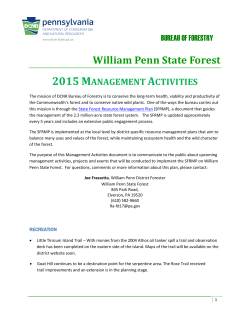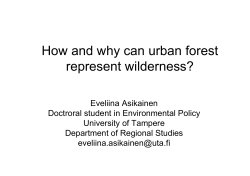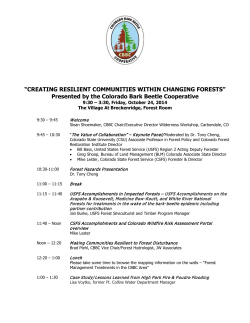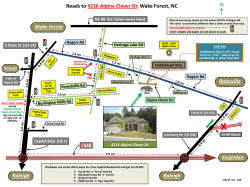
Analysis of actors` power and livelihood assets in social
Proceedings of 5th International Conference on Environmental Aspects of Bangladesh [ICEAB 2014] Paper ID 57 Analysis of actors’ power and livelihood assets in social forest management: The case of the Teknaf Peninsula, Bangladesh KK Islam1, M Zulfikar Rahman2, Kazuo Asahiro3, Noriko Sato1 and Masakazu Tani3 1Forest 2Department Policy Laboratory, Kyushu University, Fukuoka, Japan of Agricultural Extension and Education, Bangladesh Agricultural University, Mymensingh, Bangladesh 3Department of Environmental Design, Faculty of Design, Kyushu University, Japan Corresponding e-mail: kamrulbau@yahoo.com Abstract The study seeks to identify the most powerful actors and the extent at which they influence the outcomes and also to measure the effect of Social Forestry (SF) on livelihood assets of participants. The study was conducted in Teknaf Peninsula under the district of Cox’s Bazar, Bangladesh. The results revealed that the Forest Department proved itself as the most powerful and influential actor in trust, incentives and coercion elements of actor power analysis. The overall value of livelihood assets pentagons of participants (0.79) have improved compared to non-participants (0.70). Although the financial and natural assets did not show a remarkable increase, but the natural, human and social and capitals ensured that the SF have had an substantial impacts on the livelihoods of the participants. So, the study would recommend to promote SF with proper government facilities and also empowering local participants in order to balance the power among actors, and this will place the local participants in governing all of their development activities efficiently. INTRODUCTION Social forest (SF) management have directly involved forest users in common decision making process and implementation of forestry activities [1]. More specifically it refers the exercise by local people of power to influence decision regarding management of forests, including the rules of access and disposition of products [1, 2]. Social forestry activities have started in Bangladesh in 1982 and 1998 in Teknaf Peninsula with the direct support of the donors [3]. The forests of Teknaf display a great richness and diversity of cultures and people, geographical features and biodiversity. However, SF perception in Bangladesh has been ‘political’ in nature since beginning. This approach focuses the contested nature of access and control over forests in social and power relations [4]. It initiated an emblematic struggle between various kinds of actors, in particular between government and non-government actors and local people cutting across political divide. On the contrary, SF programs of Bangladesh is people oriented, community oriented, resource focused and partnership-based management programs [5, 6]. It emphasized on the community and focuses positive participation of different stakeholders in natural resources management and livelihood improvements [3]. So, it is very important to know how the SF managements influence the livelihoods of participating people and also the power relation of different actors. Within this context, the broad objectives of this study are to identify the most powerful actors and the extent at which they influence the social forestry (SF) outcomes and also measure the effect of social forestry on livelihood assets of participating people. METHODOLOGY A. Study Area and SF Program The case study was carried out at the entire SF areas of Teknaf Peninsula under the district of Cox’z Bazar, Bangladesh. The SF programs of Teknaf were mainly distributed under the Beat offices (lowest forest administrative unit). Local Beat Officer has controlled and prescribed the fast growing tree species (e.g. Acacia spp.) for SF programs for 10-year rotation cycle. Participants have the equal responsibility to manage and practice the SF programs with a benefit sharing of 45%:45% with forest department and remaining 10% benefit will preserve for future Tree Farming Funds (TFF). B. Theoretical and Analytical Frameworks The study has based on actor centered power and livelihoods theories. Power is a social relationship, where actor X alters the behavior of actor Y without recognizing Y’s will [1]. This study expand Max Weber’s theory on power against resistance (coercion and incentives) with a new form of power without resistance (trust), so, this study focus on three elements of power: coercion, incentives and trust [1, 7]. Power is exercised by the use of information, and the practice where an individual or a group of persons is forced by a different party to involuntary behave in a certain manner is coercion [4]. Incentives are financial or nonfinancial factors that alternate a subordinate’s behavior by motivation [4]. However, trust is a power element through which the subordinate changes his behavior by accepting the potentate’s information [4]. The study also relied on DFID’s Sustainable Livelihood Frameworks in which the main basis is the livelihood capitals pentagon. Five types of livelihood capitals/assets (human, physical, social, natural and financial) were discussed and different indicators were constructed to measure the five livelihood capitals [8, 9]. This study would select most important indicators (Table 2) to measure the livelihood capitals which is related to the reality of local peoples’ livelihood conditions and the characteristics of SF performance in the selected area. Various scaling and indexing methods was adopted to measure human, physical, social, natural and financial capitals so that it was possible to make them comparable and to allow meaningful interpretation. Most of the indicators are determined by using rating scale methods in terms of different weight: 0.33, 0.66 and 1.0 interpreted as poor, medium/average and good. The questions that have three answer choices measured as: I = Good% ×1 + Medium% × 0.66 + Poor%×0.33. The two answer questions, Yes or No are interpreted as: I= Yes%×1 + No%×0. The economic benefit questions related to money was measured in different ways. Less than the mean value would be classified as poor with the weight of 0.33; more than the mean but less than 1.5×mean treated as medium/average with the weight of 0.66; and more than 1.5×mean was classified as good with the weight of 1.0. Similar types of calculation procedure were followed for participants’ tree stocks and livestock indicators. After weight calculation of each indicator, we calculated the value of each type of livelihood capital and finally the overall livelihood capital value. C. Sampling and Data Collection The study randomly selected 35 SF members (called participant) out of 200 successful participants. Face to face interview was used to collect data during March to June 2014. In order to illustrate and compare the changes in degree of livelihood capitals of participants, the study also used 15 Page | 90 Proceedings of 5th International Conference on Environmental Aspects of Bangladesh [ICEAB 2014] non-SF participants’ interview data who possessed similar socioeconomic conditions of the SF participants before the SF program initiated. RESULTS AND DISCUSSION A. Actors Power Analysis The study was identified 17 actors in Teknaf SF network (Table 1). In addition, the evaluated perceptions and opinions on power dimensions coercion, incentives and trust for all actors, using scale 2 for powerful and 1 no-power is shown in the Table 1. The forest department more specifically the Beat officer holds the most powerful actor in coercion, incentives and trust elements of SF actor power network. They also hold the authority and takes on the executing tasks on management of the forests [10]. B. Livelihood Analysis The total value of livelihood assets was 0.79 and 0.70 for SF participants and non-participants respectively (Table 2 and Figure 1). The results clearly illustrated that the livelihoods of participants have improved, although the differences of the values were not significant. The improvement of livelihood situation was the result of the integrated impact of all types of livelihood capitals. However, the changes in various types of capital were associated with different results and features. The human capital value was 0.74 and it increased to 0.07 compared to non-participants. Improvement of skill and knowledge is very important for development of human capitals and the participants had received training from FD and other NGOs which showed a significant increase in their capacity buildings [11].Similarly, the children education and health status of the participants have increased due to the involvement of SF programs.. Table 1. Summary of power analysis of Teknaf Social Forestry Actor category Power Dimension Actors in the networks Trust Incentive Coercion 1 2 1 Divisional Forest Officer 1 2 1 Range Officer 2 2 2 Beat Officer 1 1 1 Upazilla Afforestation and Nursery Development Projects 1 1 1 Costal Green Belt Project 1 1 1 Forestry Sector Project 1 1 1 Nishorgo Support Project State Ministry 1 1 1 Ministry of Forests and Environment Forest Dept. authority 1 1 1 Wildlife Management and Nature Conservation Division Private Sector (2) 1 1 1 Saw millers 1 1 1 Brick fields 1 1 1 Local Political Leader 1 1 1 Local Government Member Social Forest Association 1 2 2 Local Social Forest Committee Development Org. 1 2 1 NGOs (e.g. BRACK) Individual (2) 1 1 2 Head Man 1 1 1 Encroachers/illegal loggers Forest Department (3) Donor (4) Leader (2) Table 2: Evaluation of overall livelihood assets capitals Capitals Indicators SF Participants Indicator wt. Human -Skill and knowledge due to trainings -leadership ability -Education level/status -Children education status -Health condition/status Physical -HH durable assets -HH fixed assets -Livestock assets -Dependency on forests for firewood -Alternative sources of firewood uses -Collective action for common road structures Natural -Perception of biodiversity conservation -Necessary for forest protection -Forest protection activities -Dependencies on natural forests -Tree stocks Social -Relationship to the community -SF/training -Involvement in social organizations Financial -Total HH income -SF income -Easy loan facilities -Annual expenditure (% of annual income) Livelihood assets Capital value 0.72 0.63 0.86 0.82 0.68 0.78 0.72 0.81 0.65 0.71 0.96 0.90 0.92 0.86 0.68 0.69 0.96 0.82 0.78 0.96 0.78 0.52 0.78 0.74 0.77 0.81 0.85 0.76 0.79 Non-participants Indi. Wt. 0.58 0.61 0.82 0.72 0.63 0.76 0.70 0.80 0.46 0.58 0.86 0.82 0.68 0.72 0.66 0.62 0.90 0.58 0.74 0.86 0.48 0.74 Capt. val. 0.67 0.69 0.70 0.75 0.69 0.70 Page | 91 Proceedings of 5th International Conference on Environmental Aspects of Bangladesh [ICEAB 2014] In case of physical capital, remarkable changes have showed in participants dependency on natural forests for firewood and used of alternative sources of firewood (Table 2; Fig. 1). Participants’ attitudes towards using firewood from natural forests have changed due to involvements of SF programs. REFERENCES [1] A Maryudi. 2011. The contesting aspirations in the forests. PhD Thesis, University of Gottingen, Germany. Pp.34-35. [2] MH McDermott and K Schreckenberg. 2009. Equity in community forestry: insight from North and South. International Forestry Review, 11(2):157-170. [3] KK Islam and N Sato. 2012. Participatory forest management in Physical Bangladesh: has it helped to increase the livelihood of Sal forests dependent people. Southern Forests: A Journal of Forest Science, 74(2): 89-101. Human Financial P NP [4] AF Itubo. 2011. Power dynamics within community forestry: examples from Kenya. MSc Thesis, University of Gottingen, Germany, pp.11-12. [5] A Bond, CN Davis, K Nott and G Stuart. 2006. Community based natural resource management manual. WWF-World Wide Fund, pp.24-52. [6] SP Robert and RG Rebecca. 2006. Fisheries co-management: a practical handbook. International Development Research Centre, Ottawa, Canada, pp.8-22. Social [7] M Weber. 1964. Basic concepts of sociology. New York, USA, p.28. [8] D Carney. 2002. Sustainable livelihood approaches: progress and possibilities for changes. Department of International development (DFID), London, UK, pp. 13-34. [9] AT Chistopher. 2008. Community control of resources and the Natural Fig. 1: Overall livelihood capitals pentagon Regarding to natural capitals, the results showed a significant improvement of 0.11 (Table 2) and most of the participants’ have possessed positive perception towards biodiversity conservation and forest protection. Participant’s consciousness to forest protection has increased due to involvement in SF activities and similar types of results were found by Islam and Sato 2012 [3] in a study of Sal forests, Bangladesh. In terms of social capital, participants acquired skill and knowledge had an impact on social relationship and the capital value for participants and non-participants were 0.85 and 0.75 (Table 2 and Figure 1). Financial capitals did not show a significant improvement but the SF income had augmented participants’ total household income and the overall value of this capital were 0.76 and 0.69 for participants and non-participants. The above results and discussion indicated that the overall livelihood capitals improvement was progressive, so, these programs have had considerable impacts to the livelihoods of the participants. challenges of improving local livelihoods: a critical examination of community forestry in Nepal. Geoforum, 39: 1452-1465. [10] M Krott. 2005. Forest policy analysis. Kluwer Academic Publishers, Dordrecht, Seiten, Germany, p.323. [11] H Chen, T Zhu, M Krott, JF Calvo, SP Ganesh and I Makoto. 2013. Measurement and evaluation of livelihood assets in sustainable forest commons governance. Land Use Policy, 30: 908-914. CONCLUSION In Bangladesh, social forest management introduced new understanding of forests with an approach to social, economic and conservation outcomes. These outcomes have depends on associated actors, their power and interest as well. The actors power analysis of this study found out that the forest administration proved itself as the most powerful and influential actors in SF. However, it is superficial to claim that through the SF programs the forest administration aspire control over the forests and other actors in recent years, rather the forest policy of Bangladesh and its execution have unfastened the opportunities to forest administration. In order to change this, the forest administration must become a facilitator for empowering local participants. On the contrary, the SF programs have had a positive impacts on the livelihood capitals of the participants and all of their five livelihood capitals showed increasing trends compared to non-participants. Therefore, it may be said that social forest management has an effective management preparation that provided certain insights regarding the microcosm of livelihood capitals development. Finally, the study recommends that a strong commitment from important actors together with effective forest policy and management plan could make social forestry programs more sustainable. Page | 92
© Copyright 2025









